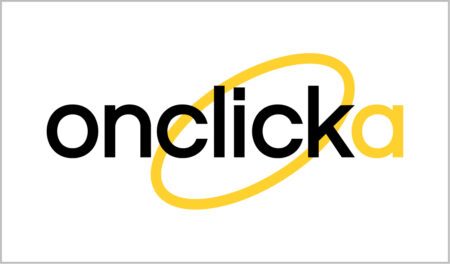The advertising ecosystem and monetizing of sites via ad placements is becoming more complex, thus publishers and advertisers benefiting from ad servers to better manage and optimize their campaigns.
In 2021, digital ad spending in the UK alone is set to increase by 16.8% to £19.23 billion, with growth across all industries to only continue in upcoming years.
With so much potential to level up your revenue using ad servers, you may want to know everything about the advertising server to maximize ROI.
In this guide we take a look at the different types of ad servers and how our carefully selected list of top ad servers can enhance and improve your ad campaigns, no matter the level of complexity.
What is an Ad Server?
Programmatic advertising consists of key players and technical solutions, namely the advertisers, publishers, supply-side platform (SSP), demand-side platform (DSP), ad networks and advertising agencies.
In the intersection of this ecosystem lies the crucial component of ad servers.
Think of ad servers as advertising softwares that are hosted on a server to effectively manage online ad campaigns and display relevant ads in a specific time frame on the best suited website or mobile app for both the publisher and demand partner.
In essence, ad servers are responsible for optimizing and distributing ad content across digital platforms, including mobile apps, hence earning their title as campaign management servers and ad tracking platforms.
This system can be used by DSPs, SSPs, an ad exchange and ad networks and come in different formats, such as open source ad server, self-hosted ad server, video ad server and more ad hoc solutions.
But don’t get too overwhelmed. We will take you through their individual strengths and weaknesses, allowing you to choose the best ad server for your unique ad campaigns.
App Revenue Buyer's Guide
Download the App Revenue Buyer’s Guide today and start shaping the future of your app! Your journey towards app monetization mastery begins now.
Ad server types
Before we dissect the variations of ad servers, to find a clear overview of these complex concepts, let’s classify ad servers into two segments: one that serves publishers and advertisers individually, a.k.a. the selling and buying components of this ecosystem.
These two types of ad servers are called first party and third party ad servers, and have different purposes for advertisers and publishers.
First party ad servers
First party servers provide publishers with sufficient control over their inventory, allowing them to efficiently organize ad placements, optimize ad delivery and view statistics.
First party ad server is specifically hosted on a publisher’s server, sending ad requests to advertisers to then display them on the publisher’s website(s) or mobile app(s), simplifying and streamlining the process of selling and buying ad slots.
In modern times where no direct ad campaigns (sold directly to the publisher) are being carried out, the first party ad server decides which ads to display on a publisher’s inventory.
Third party servers
Third party ad servers on the other hand are used by advertisers and ad agencies to store and manage advertising code as well as to deliver, track and analyze ad campaigns running on multiple publishers’ websites.
Advertisers can use third party servers to easily deliver their creatives and keep them optimized across all of their ad campaigns. These ad servers also ensure overall campaign optimization, and data management and reporting.
Verifying the validity of data provided by publishers for impressions and clicks they delivered is simplified with this concept, allowing advertisers to run A/B testing to further enhance their ads campaigns.
Consider third party servers as an auditing tool that measures and verifies whether the impressions were actually delivered properly.
Hosted vs. self-hosted ad servers
Other types of ad servers include hosted and self-hosted platforms, with each having their advantages, offering bespoke monetization methods.
It is important that you choose one of the two main categories of ad server types that best serve your individual needs.
Hosted ad servers
Hosted ad server is a platform hosted for a user by an ad server company. Such servers require minimal technical knowledge on how to run it, and rely entirely on an ad server of professional expertise.
They don’t need complex installation, as updates are automatically installed for the user. You can also count on a high level of tech support, if needed at all.
Despite the several pros, hosted servers tend to run at a higher cost and typically offer advertisers fewer options for ad customization.
And if you are the type that likes to be in charge of your ad data, hosted platforms store data themselves, minimizing the amount of control you will have over them.
Self-hosted ad servers
Self-hosted ad server is hosted directly on the advertiser’s server – like the name suggests.
It provides a higher level of control over your ad data and is fully customizable in every aspect, all that costing you only a one-time fee and the ongoing charge of the ad server itself.
Of course, it starkly contrasts with a hosted ad server, as one does require technical knowledge on how to install self-hosted scripts.
For comparison, here is a checklist of features that are and are not included in both ad servers:
| Features | Hosted | Self-hosted |
|---|---|---|
| Installation/updates | Y | N |
| Customization | N | Y |
| Data control | N | Y |
| Tech support | Y | N |
| Costs | N | Y |
Open source ad servers
An open source ad server is a free ad serving script that enables publishers, ad networks and advertisers to run a number of operations. Similar to a self-hosted ad server, it is up to you to maintain and run ad services as well as cover any ongoing server costs.
Open source platforms also provide similar functionality to third-party ad servers, specifically the ability to serve ads on websites and mobile apps, and to collect data for impressions, clicks and conversions.
Hosting this type of ad serving script on your own servers gives you the freedom to manage and run ad campaigns for multiple advertisers, as well as from an ad network or ad exchange.
Essentially, the main difference between an open source ad server and a third-party platform is that the former provides the added benefit of its services being free – which is never a bad thing.
Mobile ad servers
With mobile advertising spending being set to surpass 339 billion U.S. dollars worldwide by 2023, you may want to invest in ad placements and take advantage of the booming revolution of online advertising.
Mobile ad server is a web-based, self-serving software solution for advertisers to manage their own ads they display on apps or the mobile web.
Among the several benefits they bring, a few of them include the following:
- Allow control over bids & budget
- Facilitate campaign scheduling
- Provide sophisticated targeting
- Guarantee transparency in ad campaigns analysis
- Provide valuable insights to make data-driven decisions
Video ad servers
Video format is currently at the top of the list of how we consume content. With this new mobile lifestyle, people are prone to favor this type of format, which allows us to digest information in a more condensed and swift fashion.
Video is increasingly chosen over newspapers and books and video ads are therefore becoming the driving force of online advertising.
Video advertising involves the process of showcasing ads within online video content, either before, during or after a clip, or is even displayed on its own.
These video ads are sold and bought via programmatic advertising. So typically video ad servers help advertisers and publishers manage their video ads and campaign tags.
Video ad platforms enable centralized storage, data tracking and delivery of video ads, helping publishers effectively decide which ads are displayed on the screen to target the right audience and generate the most conversions.
Ad server systems
Not only are there a wide range of ad server types but you also get several layers to them.
These ad server systems offer different functions and principles that make today’s programmatic advertising way more advanced and complex.
We have summarized the main ones for you below before we dive deeper into how you can use ad servers for your campaigns.
Waterfall
In the waterfall system, publishers’ ad servers prioritize ad networks they are directly connected to and displayed on their desktop or mobile inventory.
Waterfalling describes the method of selling these inventories based on the price floor, meaning the minimum ad placement price, set by the publisher.
Similar to an auction, the inventory passes through demand partners in the order of priority, rather than highest to lowest bids.
Programmatic advertising
Programmatic advertising is all about using automation to buy digital ads in contrast with old school methods, such as issuing manual insertion orders, pricing negotiations and so on.
Programmatic ad serving systems bring higher efficiency to the digital advertising ecosystem as a whole. With the use of software algorithms it’s possible to meet advertisers needs and publishers’ inventory way more efficiently.
Real-time bidding
Real-time bidding (RTB) calls for a wider definition and is one of the layers of programmatic advertising.
You can think of RTB as an online auction for advertisers to bid for placing their ads on desktop and mobile publishers’ inventories.
The auctions are often facilitated by ad exchanges or supply-side platforms (SSPs), and are implemented as an alternative ad tag model to sell inventory, if header bidding has not been integrated by the publisher.
Header bidding
So what is header bidding? Originally, this auction type was developed for desktop online advertising, and only later was it adopted by mobile advertising as well.
Header bidding is an automated concept – quite literally. Publishers display their inventory on multiple ad exchanges, allowing several advertisers to bid on them instantly.
In contrast with the waterfall auction, header bidding is all about finding which demand partner bids the highest.
The determining factor in this type of RTB is the header code, which is placed by the publisher in the header of their site: each time a user visits the website, the browser will request to serve an ad on that specific page.
But more on how exactly this process goes later.
Ad mediation platform
Ad mediation is a web-based software solution for publishers to participate in a real-time auction based selling.
Its optimized algorithm is designed to access multiple ad networks and determine which one to send requests to so that it will deliver the highest cost per thousand impressions (CPM) rate for publishers’ ad slots.
The benefit of an ad mediation platform comes from combining several ad networks into one single SDK, with which publishers can set priority for serving these networks, according to their specific eCPM, geography and other parameters.
With an ad mediation solution, publishers can effectively increase ad revenue and profit, by identifying the CPMs of various ad sources and implementing those with the highest rates.
Mediation platforms can save you a lot of time, improving performance instead of wasting valuable resources on managing ad serving systems yourself.
How do ad serving platforms work?
Now that we have walked you through the different types of ad servers including their systems and diverse layers of services, we can dissect the actual process of this digitized and evolved form of advertising that we know as ad servers.
You may have caught a glimpse of the individual workings of various categories of ad servers, but in order to understand how they function as a whole, let’s first understand where ad servers belong within the ecosystem of automated ad marketing:
Ad servers within the programmatic advertising system

Ad networks, ad exchanges, SSPs and DSPs are all components of the programmatic advertising system.
The usual process involves the publisher installing a code on their web or mobile page, which sends an ad request to a demand partner, a.k.a. the advertiser, who then returns an ad for display. The publisher gets paid for showing these ads.
This is a (very) simplified summary of the ad serving process.
So let’s look at the individual processes.
SSPs & ad servers
Remember when we talked about first party and third party ad servers?
Well, this entire ecosystem circles back to publishers who simply needed a more efficient and simpler way to display, manage and track their several ad campaigns as well as measure their performances.
The first party refers to the publisher’s ad server. But didn’t SSPs serve publishers as well?
That’s correct, but SSPs and ad servers are not the same thing.
In fact, SSPs allow publishers to sell inventory to demand partners programmatically, while ad servers are used by publishers and advertisers, and also agencies and ad networks, serving as a kind of management system.
In recent years, ad servers have adapted functionalities that are offered by DSPs and SSPs too, including targeting, budget management and so on. Hence why people confuse them for one another.
So if they are different concepts then why are we discussing them?
In ad serving technology, ad servers and SSPs work closely together, as it all began with publishers wanting to leverage the opportunity of displaying ads, with advertising increasingly moving online since the early 1990s.
So how do they operate as a family in facilitating these opportunities for publishers?
How do first party ad servers work?
In the process of ad serving, the first party ad server is the ultimate starting point and the chronological sequence of steps is:
- Publisher’s ad server analyses user data (e.g. language, geolocation, online behavior), which can be also extracted from the data management platform (DMP)
- The SSP receives this data and forwards the ad request onto the ad exchange -where the trade happens between supply ad demand partners
- The ad exchange deals with the third party ad servers
- The publisher’s ad server receives the relevant ad creative
- There first party ad server sends a JavaScript tag to the website where the relevant ad is displayed to the user
With marketing automation expanding to become the ultimate advertising method, advertisers needed a way to organize their ads campaigns with multiple publishers.
This is where the third party server was born.
How do third party ad servers work?
Third party ad servers operate slightly differently than first party platforms.
While we have a similar concept here, the real difference is that they serve demand partners on the other end of the system and the chronological sequence of steps is:
- Third party ad servers also analyze user relevance for the ad placement, and track impressions, clicks and conversations, measuring the reach of the potential ad campaign
- Back to the first party server, where several buyer requests are not being processed, the best paying ad is finally selected
- The growers is redirected to the third party ad server, from which the ad is retrieved and displayed on the web page
And this entire process takes no longer than a millisecond – welcome to programmatic advertising.
How to choose the top ad servers?
When choosing the best ad serving platform, there are certain metrics and features that should be the bread and butter of a top ad server.
This can be a tedious task, but whether you are a publisher wanting to display the most relevant ads to increase profit or an advertiser who wants to enhance traffic to their site with ad creatives, the selection process makes it worthwhile.
You are already familiar with how a top ad server needs to operate and what its typical features are to provide the best service for your business.
But let’s take a quick look at other important points you should consider:
High eCPM rates
When it comes to choosing the best ad serving platform, one of the major metrics for online marketers is the effective cost per thousand impressions rate, also known as effective cost per mile (eCPM).
You can use the eCPM rate to compare the pricing methods of various media. It also provides insight into the revenue per 1,000 impressions on the publisher’s site, telling you how much a publisher is expected to earn with your ad.
The average eCPM rate really depends on a number of factors, such as ad location, traffic geography and seasonality. But as long as you know the cost and impressions you can easily find out the eCPM using this formula:
(total cost ÷ impressions) × 1,000 = eCPM
Quality SDKs
Every ad server on the market has its own software development kit (SDK) – a software that publishers use to display advertisers’ ads on their sites and to manage their campaigns and track performance via reports and key metrics.
According to MightySignal, the most popular SDKs on the market you want to look out for when choosing your ad server are the following:
Top 15 monetization SDKs in Top 200 Free iOS Apps
| Name | # of apps use it | % of the Top 200 apps |
| Google AdMob | 74 | 37 |
| Google Mobile Ads | 28 | 1 |
| Facebook Audience Network | 27 | 14 |
| SupersonicSDK | 18 | 9 |
| VungleSDK – iOS | 17 | 9 |
| IronSourceSDK | 17 | 9 |
| Unity Ads | 16 | 8 |
| AppLovin | 16 | 8 |
| IN Mobi | 15 | 8 |
| MoPub | 12 | 6 |
| ByteDance UnionAD | 12 | 6 |
| TapjoySDK | 10 | 5 |
| Fyber | 8 | 4 |
| AdColony | 7 | 4 |
| Chartboost | 7 | 4 |
Source: MightySignal
Top 15 monetization SDKs in Top 200 Free Android Apps
| Name | # of apps use it | % of the Top 200 apps |
| Google Identity | 150 | 75 |
| Firebase | 148 | 74 |
| Google Analytics | 139 | 70 |
| Firebase Cloud Messaging | 133 | 67 |
| Google AdMob | 123 | 62 |
| Gson | 121 | 61 |
| Square | 114 | 57 |
| Google Auth | 103 | 52 |
| Google Location | 94 | 47 |
| DuAd | 89 | 45 |
| Google Guava | 82 | 41 |
| Square Okio | 79 | 40 |
| Protocol Buffers | 77 | 39 |
| Google Maps | 75 | 38 |
| Glide | 74 | 37 |
Source: MightySignal
Publishers
As a publisher, you want to have full control over your ad server.
In your selection process, look for an ad serving platform that has advanced access to ad inventory, ad formats and targeting, along with bespoke tools and methods to optimize ad display.
You also want to choose a first party ad server that allows you to effectively track and measure ad performance to identify any integral inventory requirements to further improve your campaigns and increase revenue.
Advertisers
If you’re an advertiser, you will most likely benefit from an ad serving platform that is able to provide great insight into your ad creatives and campaign performance.
Our top tip to you would be to choose a third party ad server that tracks ad impressions of each ad element, as they are valuable metrics to seek out optimal improvements for future ad campaigns.
Best ad servers for advertisers and publishers
Our breakdown of the many types of ad servers as well as the detailed processes of first party and third party platforms have hopefully got you equipped with just the right knowledge and expertise to choose the top ad server for your campaigns.
We have carefully put together a list of only the best advertising servers operating on the online advertising market below.


































